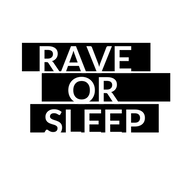Electronic dance music, commonly known as EDM, has overtaken the world over the past few decades. It’s hard to imagine a music festival or club scene without the thumping bass and electrifying beats of EDM and Techno music.
However, many people are unaware of the genre’s roots and the significant contributions of black artists to its development. From Disco to House to Techno, black artists have played a pivotal role in shaping EDM into what it is today.

In this blog post, we will explore the rich history of EDM’s black roots, tracing its origins from the underground clubs of Chicago to the global phenomenon it is today.
Join us as we delve into the untold story of EDM and celebrate the black artists who paved the way for this vibrant and ever-evolving genre.
Early pioneers of EDM
Afrika Bambaataa is widely regarded as one of the most influential figures in early EDM.
He is a Bronx-based DJ and producer who popularized Hip-hop music, blending Funk, Soul, Electro, and Disco to create a new sound. He also pioneered the use of sampling technology and turntablism, which are still used by DJs today.
His work helped define the genre of EDM that we know today.
Grandmaster Flash is another legendary figure in EDM culture. As an early hip-hop DJ, he developed innovative techniques such as cutting between two records on two different turntables and scratching vinyl with his hands or a stylus to produce unique sounds.
These techniques have become standard practice for modern DJs worldwide and helped shape how EDM is produced today.
Kool Herc is often credited as one of the founders of Hip-hop music due to his role in developing breakbeat deejaying. This technique involved playing short segments from songs over extended beats from other tracks to create something new.
Since then, many creators have used Kool Herc’s innovative approach in current EDM compositions.
The Influence of Hip-Hop on EDM
Hip-hop has had a massive effect on the evolution of EDM, from taking pieces and remixing them to breakbeat tunes and turntablism.
Sampling and Remixing Techniques
Hip-hop producers were some of the first to experiment with sampling records, creating new songs by combining elements from multiple sources.
This technique was adopted by early EDM producers, who would sample hip-hop tracks in their productions.
DJs also began remixing existing tracks into new versions that could be played in clubs or at parties. This practice became popular in both genres, allowing for more creative expression within each style of music.
Breakbeat music and turntablism
Breakbeat music is a style of hip-hop that focuses heavily on drum patterns and samples from Funk, Soul, Jazz, Disco, and other genres.
EDM producers adopted the breakbeat sound, utilizing it to influence their tunes. DJs also embraced this sound through turntablism—manipulating vinyl records using two turntables to create unique rhythms or effects during live performances or studio recordings.
Synthesizers and Drum Machines
Synthesizers and drum machines are electronic instruments that generate sounds using oscillators (tones) controlled by voltage signals sent from a keyboard controller or sequencer program (software).
Initially developed for use in experimental rock bands, they soon found their way into EDM production, where they remain widely used today.
Drum machines allow users to create realistic-sounding percussion patterns without playing drums manually; Hip-hop and EDM have utilized them since the 1980s.
Hip-hop has deeply impacted EDM, with sampling and remixing strategies, breakbeat music, and turntablism being utilized to create unique sounds; synthesizers and drum machines also played a role.
From there emerged House music, which originated in Chicago clubs and radio stations during the 1980s; black producers and DJs pushed it forward and further cemented its place within popular culture.
The Rise of House Music in the 1980s
House music emerged in the early 80s, drawing on disco and funk to form a style of dance music.
It originated in Chicago's clubs and radio stations, where DJs began experimenting with mixing multiple tracks to create new sounds. These DJs were instrumental in pushing House music forward and developing its unique sound.
Frankie Knuckles is widely regarded as a pivotal figure in the development of House music, earning him the moniker "the Godfather of House Music" for his groundbreaking work at The Warehouse Club from 1977 until 1982.
He helped create and popularize the renowned "four-on-the-floor" rhythm identified with House music while adding percussion components to prolonged grooves to enhance the atmosphere on the dance floor.
During this time, Larry Levan, Ron Hardy, Farley Jackmaster Funk, and Steve Hurley were also noteworthy DJs. Their work helped shape what we now call "classical House music."
During this time, the rise of the Acid House also significantly affected how producers made electronic dance music.
Acid House tracks used Roland's TB-303 bass synthesizer to produce distorted basslines, giving them a more edgy sound than traditional Disco or Funk records. This style soon spread across Europe and gave rise to other subgenres such as Techno, Trance, and drum & bass, which have since become staples within EDM culture today.
The modern scene would not exist without the pioneering efforts of early EDM artists. They laid the groundwork for future generations of producers with their groundbreaking techniques and experimentation with new technologies; these artists truly revolutionized electronic dance music.
In the 1980s, House music’s emergence heralded a new period of exploration and creativity fundamental to forming contemporary electronic dance music.
The ’90s Detroit Techno scene welcomed creative minds that sought to explore and expand the genre, leading to a new wave of boundary-pushing DJs and producers.
Techno Music in Detroit during the 1990s
Detroit is the place if you’ve ever wondered where Techno was invented.
In the 1990s, Detroit experienced a surge in Techno music that subsequently influenced the development of electronic dance music.
This genre had its roots in an underground scene emerging from Detroit’s struggling economy. The city was hit hard by deindustrialization and recession, leading many people to find creative outlets through music production and DJing.
Innovative producers like Juan Atkins, Derrick May, and Kevin Saunderson helped bring this sound into the mainstream with their pioneering use of synthesizers and drum machines.
Atkins is often credited as one of the originators of Techno for his work under aliases such as Cybotron and Model 500.
He drew inspiration from early Electro-Funk groups like Kraftwerk while incorporating elements from Motown Soul records he heard growing up in Detroit. His tracks were energetic, featuring heavy basslines and futuristic sounds that created a unique atmosphere on the dancefloor.
Derrick May’s productions were even more experimental than those of Atkins’.
He combined Jazz chords and Acid-House beats to make something completely new. He called this sound "Techno Funk" or "Detroit Techno," and it has become a symbol of EDM culture worldwide. May is seen as a pioneer of modern EDM, inspiring upcoming generations to build upon his style and explore new sounds such as Tech House and Trance.
Kevin Saunderson also played an essential role in developing Techno during this period by combining Hip-hop influences with House rhythms inspired by Chicago DJs Frankie Knuckles and Ron Hardy.
His group, Inner City, released several hits throughout the late 1980s. One of those hits was "Big Fun," which reached number one on Billboard’s Hot Dance Music/Club Play chart in 1989, making it one of the first commercially successful examples of Techno music produced outside Europe.
All three artists mentioned here are considered pioneers within EDM culture, having laid down some serious groundwork for future generations looking to make their mark on electronic dance music.
FAQs in Relation to A Brief History of EDM’s Black Roots
If you’ve still got questions regarding the influence of black culture and artists on EDM music, see if we’ve answered them in the following section:
What is the origin story of EDM?
In the early 1970s, electronic instruments and synthesizers were utilized in music production to create a novel soundscape that would eventually become EDM.
DJs began to explore the possibilities of these novel instruments, crafting unheard sounds and rhythms.
As technology advanced, so did the sound of EDM—more complex beats and rhythms were developed along with various genres such as Techno, House, Trance, Dubstep, and more.
In the 1980s and 1990s, rave culture emerged, further popularizing this genre worldwide and leading to its mainstream success today.
Did black people create House music?
The beginnings of House music are complicated and disputed, yet it is generally believed that the style originated from a mix of musical influences in Chicago during the late 1970s.
While many black DJs played an essential role in developing and popularizing the sound, they did not create or invent House music as a distinct genre.
Instead, technology, cultural trends, and social movements, which brought together different styles to make something new, drove its development.
Therefore, while black people may have influenced what we know as House music today, they did not create it.
Who is the father of EDM?
The paternity of EDM is a point of contention; however, it’s typically accepted that Giorgio Moroder was the progenitor.
Giorgio Moroder pioneered synthesizers in the 1970s, producing seminal EDM tracks such as Donna Summer’s "I Feel Love" and Blondie’s "Call Me," which have had a lasting impact on modern dance music.
His influence on modern dance music has been profound, inspiring generations of producers who have created some of today’s most popular genres, including House, Techno, Dubstep, Trance, and Drum & Bass.
How has culture influenced EDM?
Culture has significantly influenced EDM, from the music to its production and promotion.
The genres of EDM have been shaped by cultural movements such as Disco, Punk Rock, Hip-hop, and rave culture.
Different regions around the world have developed their own unique styles of EDM that reflect their local cultures. For example, Latin American countries often produce Cumbia-infused House tracks, while North America is known for its heavy bass music.
Producers are often inspired by their backgrounds when creating music; many incorporate traditional sounds with modern electronic components to craft something unique and stimulating that reflects their aesthetic.
As EDM continues to evolve, it will be interesting to see how other influences from different cultures shape the genre’s soundscape in the years to come.
Did Dubstep come from black culture?
Yes, Dubstep originated from black culture, specifically the UK’s black music scene, in the early 2000s.
Dubstep evolved from the UK garage and drum and bass scenes, which were largely influenced by Jamaican sound system culture and its heavy bass and rhythms.
Black artists and producers like Skream, Benga, and Coki are credited with being some of the genre's earliest pioneers, creating Dubstep tracks that fused elements of UK garage, dub, and grime.
Conclusion
EDM owes a significant debt to the contributions of black artists throughout its history.
From the early days of Disco and House music to the modern era of dubstep and beyond, black artists have consistently pushed the boundaries of what’s possible within the genre.
Despite facing systemic barriers and marginalization within the music industry, black artists have persevered and created groundbreaking music that has helped shape the EDM landscape we know today.
As we continue to celebrate and enjoy the music of EDM, it’s essential to recognize the cultural and historical roots of the genre and the critical role that black artists have played in its development.
By acknowledging and honoring these roots, we can help ensure that the future of EDM remains inclusive, diverse, and respectful of its past.
If EDM is your passion, visit Rave-or-Sleep for awesome EDM light toys or some of the best EDM outfit ideas.
